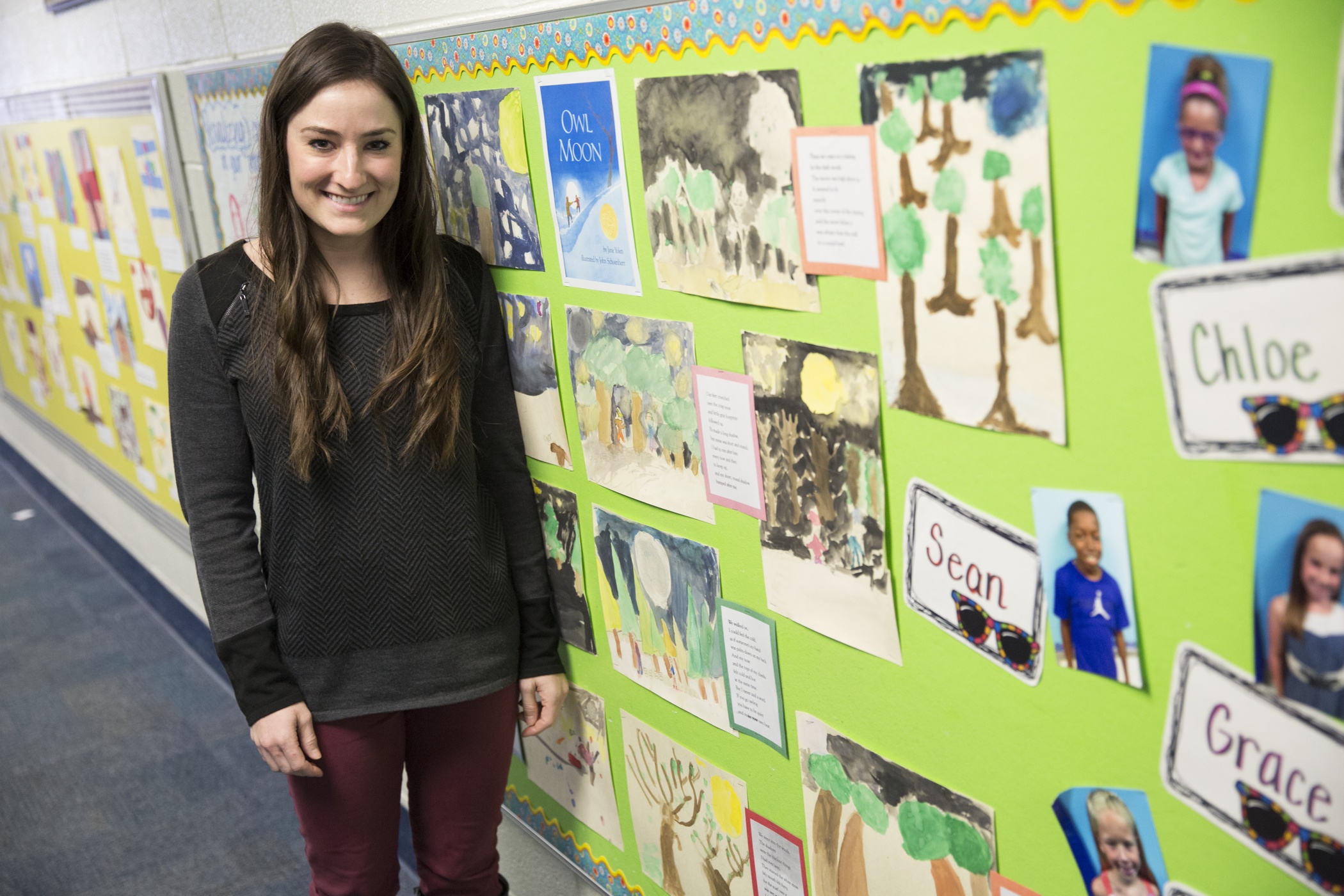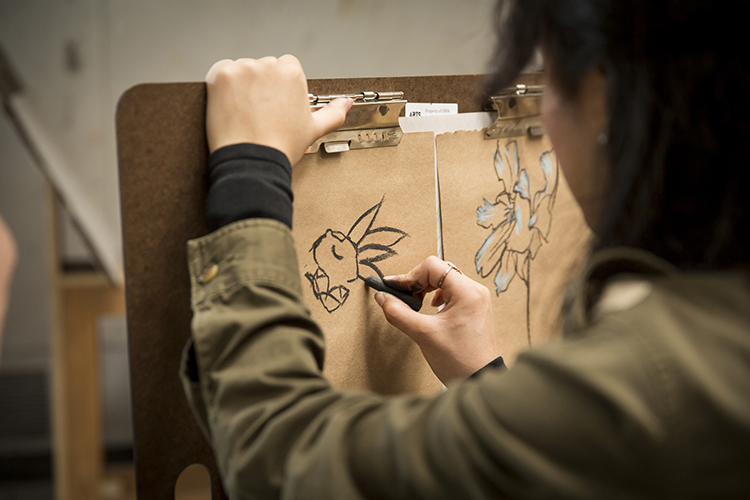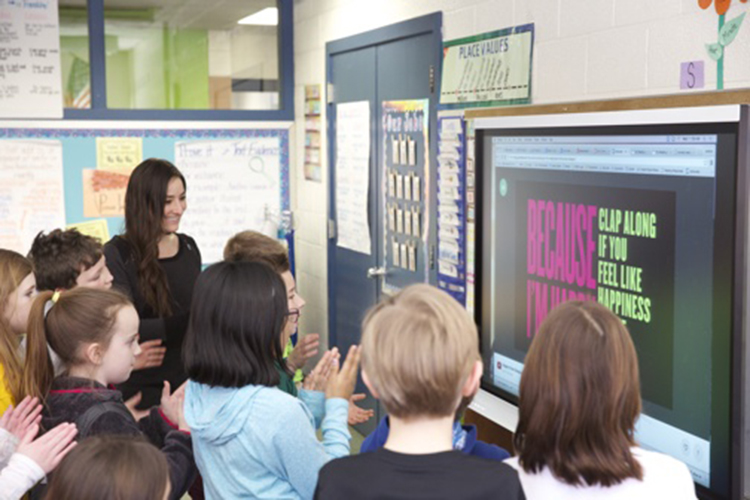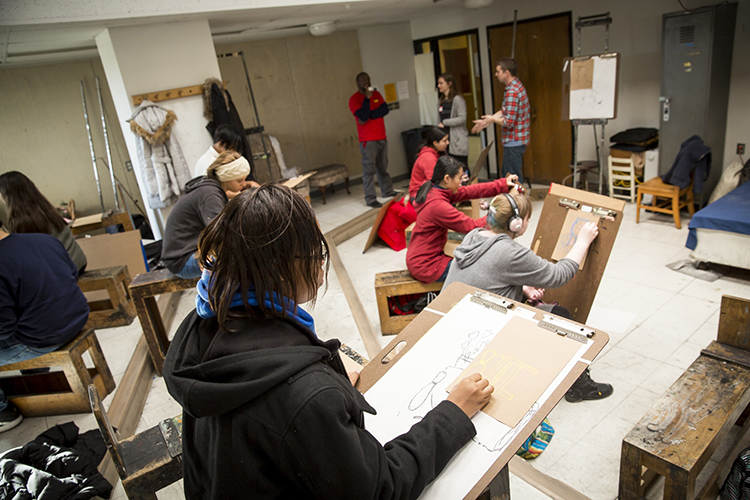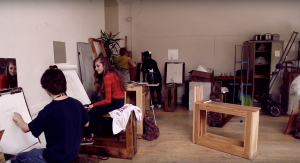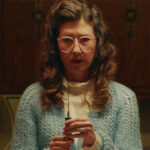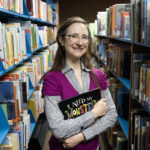Jessica Ostertag’s fourth-grade students close their eyes as they listen to her read “Little House.” As the story unfolds, the students visualize how the environment around the house changes through the years. Then they draw what they imagined the scenes looked like.
Tracy Rolkosky, art teacher at Community High School, is teaming up with the staff in the school’s biological sciences department to turn a windowless room into a greenhouse.
Both teachers have benefited from a collaborative project between the University of Wisconsin-Milwaukee Peck School of the Arts Department of Art & Design and the School of Education to support certified art teachers and integrate the arts into other subject areas.
The project, called ArtsECO (Arts Education/Community Ecosystem) is designed to create a sustainable network of support for new and veteran teachers who teach art or are committed to incorporating art into their teaching.
ArtsECO is doing that work through partnerships with schools and local arts organizations, through programs for high school students interested in the arts, through summer institutes for teachers and through scholarships for current and aspiring teachers.
Led by professors from the Peck School of the Arts and the School of Education, with a grant from the Margaret A. Cargill Foundation, ArtsECO welcomed more than 70 high school students, many from Milwaukee Public Schools, to pre-college art classes on the UWM campus last summer. High school students continue taking part in a series of arts programs throughout the academic year at UWM.
ArtsECO is also establishing links with community arts organizations by supporting UWM students in paid internships with community organizations and offering summer institutes for teachers.
But a key focus of ArtsECO is working with current and new teachers to apply arts throughout the curriculum.
“We want to help them develop strategies to help students think like artists,” said Joëlle Worm, director of ArtsECO.
The School of Education sees benefits in getting aspiring teachers involved with the arts community – whether or not they become art teachers.
“This gets teachers into an interdisciplinary way of thinking about things,” said Candance Doerr-Stevens, one of three co-principal investigators of ArtsECO and an assistant professor of curriculum and instruction in the School of Education.
ArtsECO is about incorporating the values of an art education into all subject areas while also supporting strong art programs, according to Kim Cosier, co-principal investigator and associate dean and professor of art education in the Peck School of the Arts. Skills like attention to detail, persistence and creativity are valuable in the 21st century, said Worm. The type of project-based and inquiry-based learning and ability to do-it-yourself that art fosters are good skills to have in an increasingly entrepreneurial society, added Doerr-Stevens.
Fourth-grade teacher Ostertag, who completed her certification as a reading teacher at UWM, worked with with Doerr-Stevens and Ruth Short, recently retired associate professor of education, in exploring connections between making art and reading.
“My goal is to incorporate art and visuals into what students are already learning in the content areas,” Ostertag said. “Integrating art into reading has been an engaging way to help students better understand what they read. For example, students create pictures in their minds, and we discuss how they are visualizing text, as well as how it helps them better understand the story.”
The fourth-graders develop artwork based on what they’re hearing, but also learn about metaphors, similes and other figurative language that a writer is using in a book like “Owl Moon.” Or in learning parts of speech, they may draw pictures showing how adjectives describe things, or act out verbs.
Students’ pictures differ from each other and from those of the books’ illustrators, said Ostertag. “But that’s okay,” she added. “Visualizing helps students create their own mental pictures for text, and those pictures can vary from student to student. It’s not about creating the same picture; it’s about gaining a new, or better, understanding of the story.”
Not only is reading comprehension improving among her students, she added, but also they’re more engaged in their lessons. That’s particularly helpful in her inclusive classroom that includes a wide range of learners.
“When students are able to show what they know through different means such as art, you can really see them blossom as they feel confident in their abilities.”
Truly a joint venture between the UWM School of Education and the Peck School of the Arts, ArtsECO was created and implemented with the help of additional arts and education faculty, including co-principal investigator Josie Osborne, lecturer and director of the First Year Program in the Peck School of the Arts. Osborne planned ArtsECO, writing planning and implementation grants in consultation with Hope Longwell-Grice, associate dean of the School of Education.
